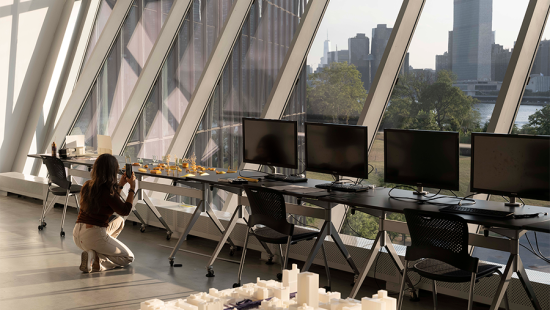Curatorial Practices: Two Upcoming Fall 2020 Preston H. Thomas Lectures
November 5 and 6 Lectures discuss exhibition-making for the Venice Architecture Biennale Kuwait and Antarctic Pavilions, offering spatial possibilities that emerge within geographic, institutional, and cultural frameworks surrounding desert hinterlands.
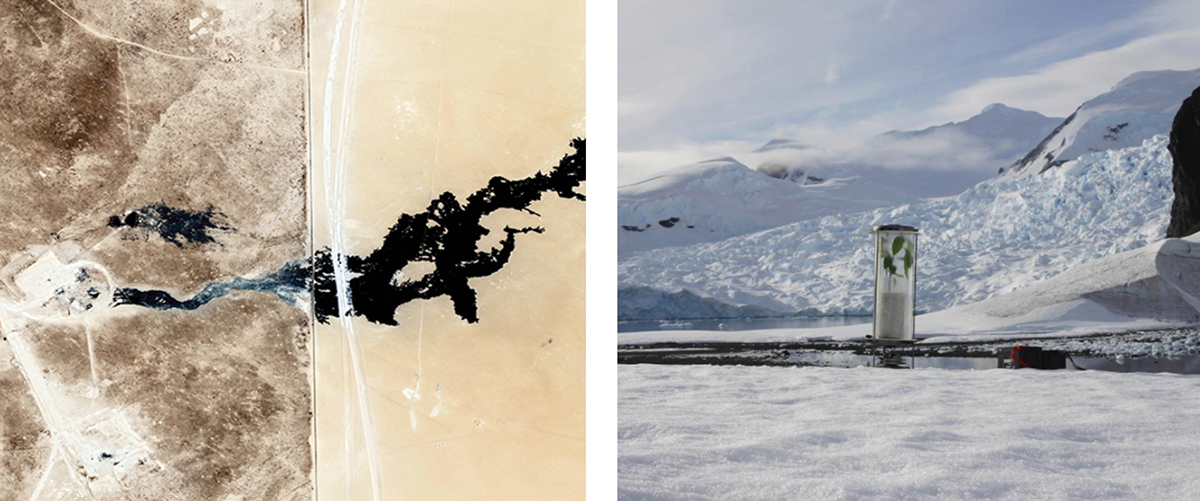 From projects selected for inclusion in the Venice Architecture Biennale, that investigate and exhibit spatial possibilities in vast deserts, hot and cold. From the 2021 Kuwait Pavilion, selected by the Space Wars curatorial team: Asaiel Al Saeed, Aseel AlYaqoub, Saphiya Abu Al-Maati, and Yousef Awaad (left); from the Antarctic Pavilion, selected by Antarctopia curator Nadim Samman (right).
From projects selected for inclusion in the Venice Architecture Biennale, that investigate and exhibit spatial possibilities in vast deserts, hot and cold. From the 2021 Kuwait Pavilion, selected by the Space Wars curatorial team: Asaiel Al Saeed, Aseel AlYaqoub, Saphiya Abu Al-Maati, and Yousef Awaad (left); from the Antarctic Pavilion, selected by Antarctopia curator Nadim Samman (right).
This fall's Preston Thomas Memorial Lectures are organized by Assistant Professor Samia Henni, History of Architecture and Urban Development, and comprise nine total talks convened around coloniality and toxicity in the world's desert regions. Two lectures in the series will share information and questions prompted by the study and consideration of spatial dynamics specific to desert landscapes in Kuwait and Antarctica.
Space Wars: An Investigation into Kuwait's Hinterland
"Counter to the forms that constitute the metropolitan, the surrounding and seemingly unoccupied hinterland of Kuwait serves as the nation’s functional staging ground through resource extraction, agricultural cultivation, military installations and cultural sedimentation."
The November 5 lecture will discuss Space Wars' findings within an amalgam of text, photography, research, and projected narratives that re-present and interpret adjacencies, dichotomies, and conflicts — all for scrutiny in the project's display as part of the Venice Biennale's 2021 Kuwait Pavilion.
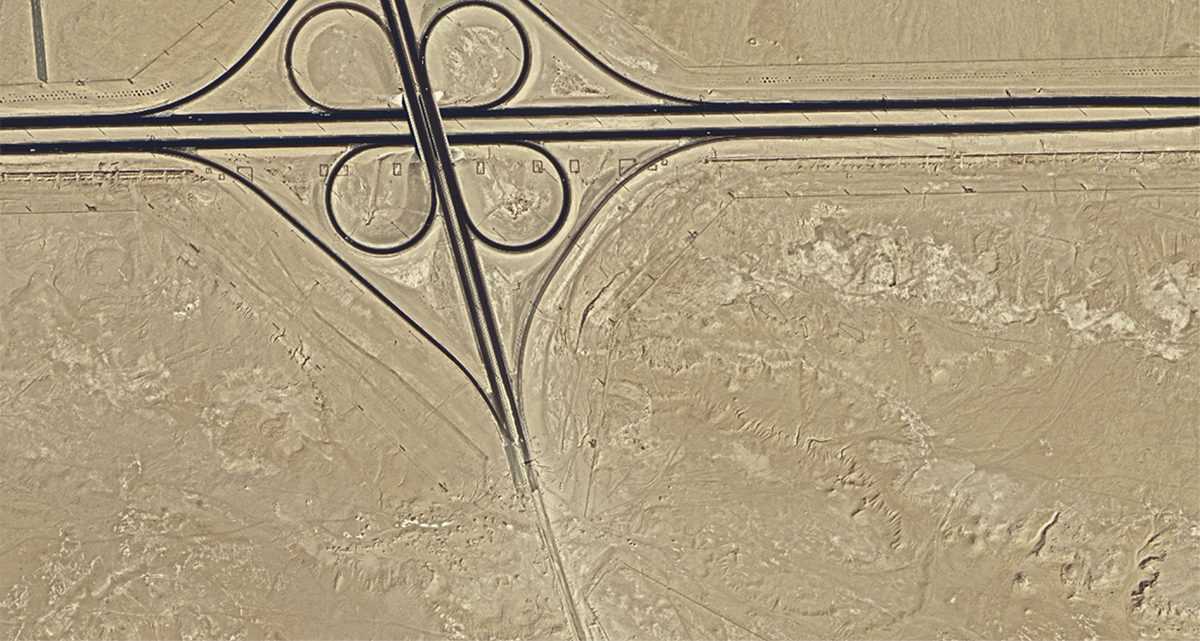 Across the recently completed causeway linking the existing metropolitan area to the North, a mega-highway project intended to connect future developments abruptly comes to a halt, coming to a head with protected archaeological Tumuli graves. Image / © Space Wars–KPVB2021
Across the recently completed causeway linking the existing metropolitan area to the North, a mega-highway project intended to connect future developments abruptly comes to a halt, coming to a head with protected archaeological Tumuli graves. Image / © Space Wars–KPVB2021
The project's curators, Asaiel Al Saeed, Aseel AlYaqoub, Saphiya Abu Al-Maati, and Yousef Awaad will touch on concerns ranging from art and design to urbanism and governance, shifting focus away from the city towards the desert landscape that makes up the vast majority of Kuwait's national territory where "questions about the future of land at the verge of consumption and erasure" emerge.
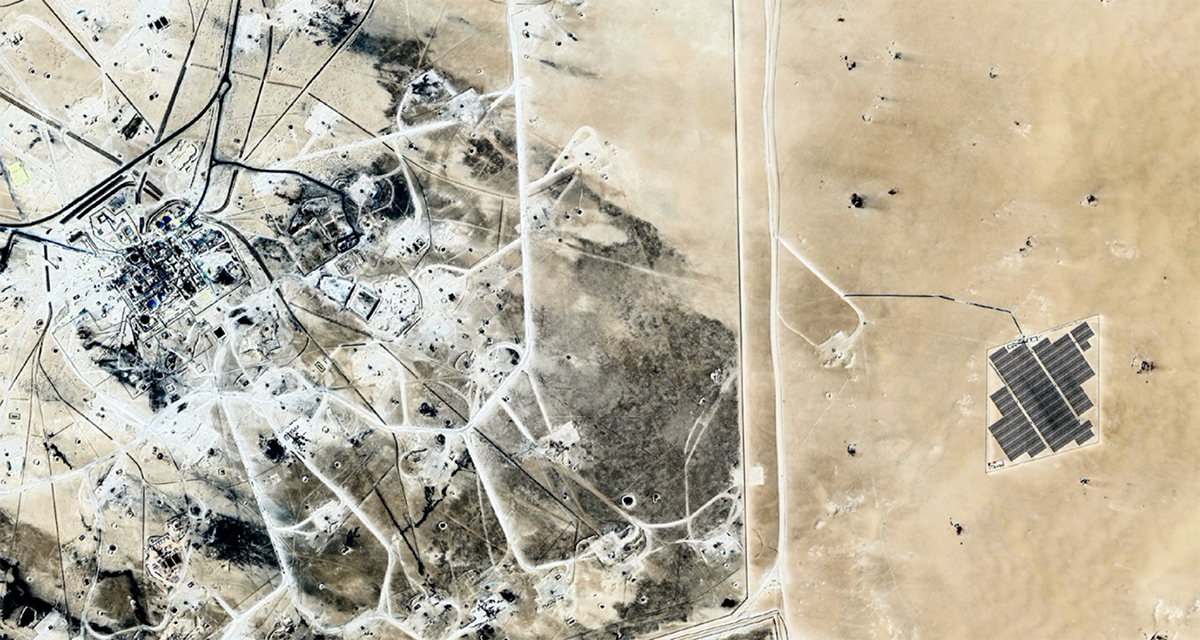 While planning for a future that moves past a dependence on oil, experimentation of alternative sources of energy production is to be expected. Here, however, the introduction of solar-powered energy serves to maintain production within the oil fields, providing a ‘sustainable’ alternative for their operation. Image / © Space Wars–KPVB2021
While planning for a future that moves past a dependence on oil, experimentation of alternative sources of energy production is to be expected. Here, however, the introduction of solar-powered energy serves to maintain production within the oil fields, providing a ‘sustainable’ alternative for their operation. Image / © Space Wars–KPVB2021
According to the curatorial team for Space Wars, "the pavilion positions Kuwait as a case study to understand the past, present, and future narratives of the desert, whilst offering itself as a space to expand the scope of the architect towards the 'hinter-urban' that has consequently enabled urban transformation."
The Antarctic Imaginary
"Antarctica is a geographic end of the world, yet central to global debates about climate change. Can we talk about an ‘Antarctic culture’ beyond scientific discourse? Confronted with a place that fundamentally questions the role of humanity, what answers do art and architecture offer?"
Nadim Samman, curator of the Venice Architecture Biennale Antarctic Pavilion (2014) will provide a second perspective on a vastly different desert hinterland the following afternoon, November 6, 3:00–4:30. Samman is a widely recognized curator and critic, and will discuss works selected for the Antarctic Pavilion under the title Antarctopia, a project in which the participating architects and art respond to the world’s least populous, southernmost continent.
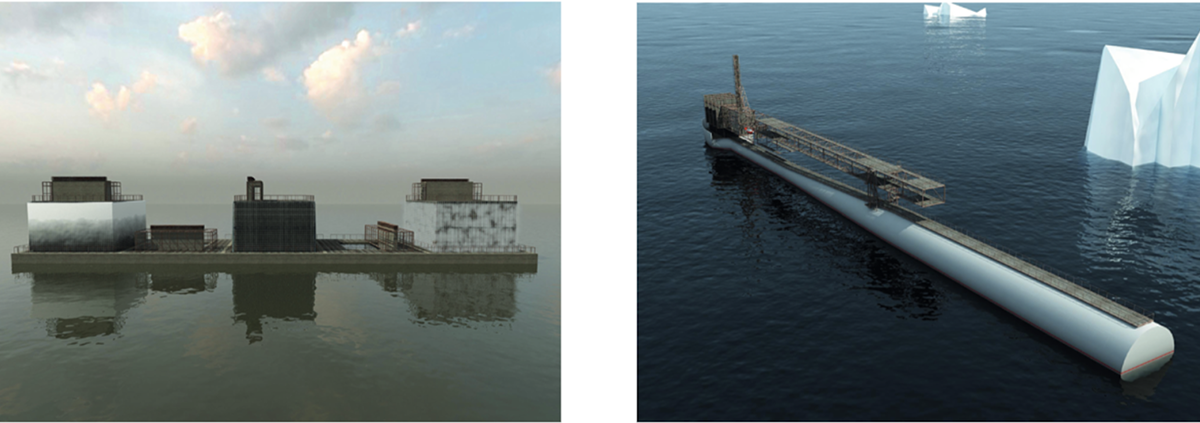 Projects included in Samman's Antarcotopia for the Antarctic Pavilion at the 2014 Venice Architecture Biennale. Floating Personal Museum (left) and Museum of Contemporary Art for Polar Zones (right) by Alexander Ponomarev Alexey Kozyr, Ilya Babak.
Projects included in Samman's Antarcotopia for the Antarctic Pavilion at the 2014 Venice Architecture Biennale. Floating Personal Museum (left) and Museum of Contemporary Art for Polar Zones (right) by Alexander Ponomarev Alexey Kozyr, Ilya Babak.According to Samman, the extraordinarily peaceful terms of the agreement around the study of Antarctica's frozen desert, a mass of land owned by no individual or nation, is the most successful example of international cooperation in the 20th century. A survey of the area prompts a series of questions for the curator and viewers, such as "Can we be Antarctican?" And asks more generally: "what role the Antarctic imaginary can play in the constitution of new political subjectivities."
Register for The Antarctic Imaginary with Nadim Samman. November 6, 3:00–4:30 p.m.
More information about the fall 2020 Preston H. Thomas Memorial Lectures





